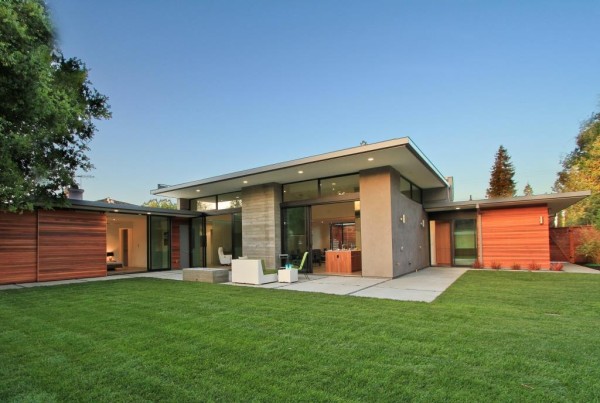These resources are from an archived version of our website. Want to see what we’ve been up to lately? Check out our new website.
Thermal Mass in Your Modern Home: What is it, and why should you care?
When we talk about thermal mass in the modern building movement, we’re referring to heavy building materials whose slow pace of temperature change makes them capable of storing immense amounts of energy.
These sustainable building materials can play a remarkable role in your modern home: regulating indoor temperature, lowering your heating/cooling bill and enhancing your comfort. At Clarum, we consider thermal mass a powerful passive strategy to achieve superior, eco-friendly comfort.
What is Thermal Mass, Scientifically?
Technically, “thermal mass” describes how much energy (in joules) it takes to raise the temperature of something by one degree (C).
Everything in the world contains some thermal mass, but certain materials have much more than others. And when it comes to building your modern custom home, that differential can have a huge impact on your comfort and costs.
Building materials with high thermal mass are slow to gain or lose heat, because they can store it for a long time. Stone, wood, water and clay are examples of natural materials that are high in thermal mass.
What’s the Difference? Thermal Mass v. Insulation
It’s a question we get a lot here at Clarum Homes: What’s the difference between thermal mass and insulation? The truth is, both are essential for temperature regulation and comfort. But your home builder must develop two separate strategies to ensure that thermal mass and insulation are optimized in your new modern home.
Insulation serves as a barrier, resisting the flow of heat. Its job is to keep warmth in (or out) of your modern home as much as possible. Thermal mass, on the other hand, doesn’t repel heat – it absorbs it.
Think of thermal mass as a heat bank. Imagine a gigantic boulder sitting out in the sunshine: it absorbs the sun’s energy all day, storing it up for later. When night falls, the rock will still be warm, slowly radiating that heat out into the now-cool air.
This is essentially how thermal mass in your building materials controls temperature inside your custom home. When the air cools down, thermal mass is still full of heat, helping your modern home stay warm even though it’s chilly outside. It also works the other way around, cooling down your home environment when the air heats up during the day.
Powerful Comfort for your Modern Home
In the hands of an experienced green home builder, thermal mass proves a powerful strategy, contributing to a home of surpassing comfort.
This is no matter of opinion. By slowing down the flow of heat, thermal mass helps create a stable, consistent temperature throughout your modern home: a crucial ingredient to thermal comfort, as the Danish scientist P. O. Fanger found in this study.
And, as explained by EcoSpecifier, thermal mass also lowers your ecological impact, as well as your bills:
“Thermal mass elements in buildings assists in the reduction of energy consumed in heating and cooling in most climate zones, can significantly reduce the ecological impacts of burning fossil fuels due to energy production [and can] reduce costs, improve comfort and reduce or eliminate the need for air conditioning.”
Clarum Homes harnessed the power of thermal mass when designing the Vista Montaña community in Watsonville (near Santa Cruz), the largest zero-energy community in the nation at that time. Our design strategy included thermal mass concrete walls insulated with rigid foam; you can read more about it here.
So, what is thermal mass and why should you care? Simply put: when skillfully combined with other high-performance home building strategies, such as super-insulation and an airtight building envelope, thermal mass can become the stuff of which dream homes are made. Talk to us to get started.
To learn more about Clarum’s high-performance approach to modern home building, give us a call at 650.322.7069.









